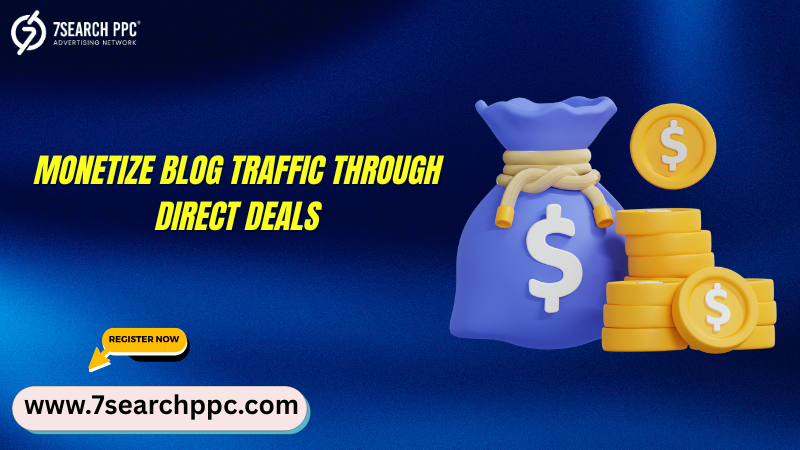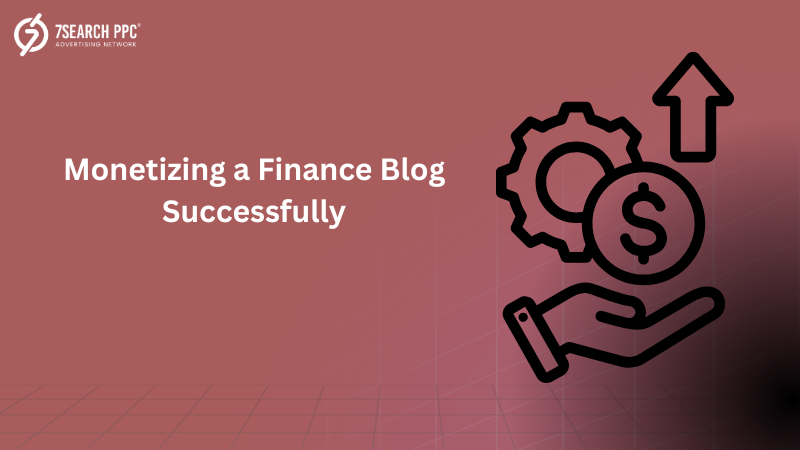Monetizing blog traffic has become more strategic and performance-driven than ever before. As publishers seek greater control over their earnings and aim to build more sustainable income streams, direct deals have emerged as a powerful method to monetize blog traffic. Rather than relying solely on third-party platforms, publishers can directly engage with advertisers, brands, and agencies to sell ad space, negotiate better terms, and maximize revenue.

Exploring the Impact of Direct Deals on Monetization
Direct deals refer to the practice of publishers bypassing ad networks and intermediaries to sell advertising space directly to advertisers. Unlike programmatic advertising, where control over ad content, pricing, and targeting is limited, direct deals offer full transparency and control.
For finance bloggers, this model is especially advantageous. Since financial content often attracts high-value users with strong commercial intent, advertisers are willing to pay a premium for exposure. If you're aiming to monetize blog traffic effectively, especially in niches like finance or investment, then direct deals should be part of your monetization arsenal.
Why Choose Direct Deals for Blog Monetization?
There are many compelling reasons why direct deals outperform traditional ad networks in terms of value and control:
Higher Revenue Potential: Direct negotiations often mean better CPMs or flat-rate deals.
Custom Campaigns: Brands can request native placements, newsletter sponsorships, or sponsored content.
Long-Term Partnerships: Direct communication fosters trust and recurring collaborations.
Brand Alignment: Publishers can be selective about who advertises on their blog, preserving their site’s integrity.
If you're in the finance site monetization space, direct deals are particularly effective because advertisers targeting financial audiences are looking for quality placements rather than bulk impressions.
Building a Blog That Attracts Direct Advertisers
To start monetizing your blog traffic through direct deals, you must first present your blog as a valuable media property. Here are the foundational steps:
Define Your Niche and Value Proposition
Advertisers want to know who your audience is. For example, a finance blog that attracts young professionals interested in investment opportunities offers a highly targeted demographic for finance services. Knowing your blog’s audience profile helps you pitch to relevant advertisers who are willing to spend on financial traffic monetization networks.
Create a Media Kit
A professional media kit should include:
Blog demographics (age, location, income)
Monthly traffic and engagement metrics
Case studies or previous brand collaborations
Ad placement options and pricing
This tool is essential in convincing advertisers that your blog is worth their investment.
Maintain a Clean and Engaging Site Layout
A blog that is well-structured and easy to navigate provides a better experience for users and advertisers alike. Ensure your site loads quickly, is mobile-friendly, and that ads do not interrupt the content flow. An optimized layout increases the likelihood of conversions, leading to better results for advertisers.
Strategies to Monetize Blog Traffic With Direct Deals
Once your blog is well-positioned, there are several ways to structure direct monetization deals:
Banner and Display Ads
Offer premium placement for high-impact display ads, such as:
Leaderboards (728x90)
Sidebar skyscrapers (300x600)
In-content banners (300x250)
These are particularly effective on finance blogs, where users are often searching for solutions, services, or tools.
Sponsored Content
Publish sponsored blog posts written by the advertiser or crafted by you. This form of content should offer real value while subtly promoting the advertiser’s service or product. For finance brands, this could mean a deep dive into a financial tool, a how-to article, or an investment guide.
Sponsored content drives finance content earnings while maintaining reader engagement.
Newsletter Sponsorship
If you run an email newsletter, offering direct sponsorship slots can be lucrative. Finance readers often subscribe to updates on market news, lending tips, or investment trends. Positioning a brand inside your email content boosts visibility and ROI.
Affiliate Partnerships
While not always classified as direct deals, high-commission affiliate programs (especially in finance niches) often evolve into direct relationships. You can negotiate custom commission structures once you prove performance, making affiliate deals an excellent finance blog monetization method.
>>>Get Paid for Your Traffic – Become a Publisher Partner<<<
Outreach Techniques for Securing Direct Deals
Securing direct deals requires proactive outreach. Here’s how to begin:
Identify Potential Advertisers
Look at similar blogs and see which companies advertise on them. Also, search Google for finance tools, loan platforms, or budgeting apps, and reach out to their marketing teams directly.
Pitch With Value
Craft a personalized pitch email explaining:
Who your audience is
How their product aligns with your content
What type of exposure they’ll get
Pricing or custom packages
A compelling subject line and a professional tone can significantly increase your success rate.
Follow Up Regularly
Don’t be discouraged if you don’t get a reply right away. Marketers are busy. Follow up after a few days, and be persistent without being pushy.
Pricing Models in Direct Deals
There are multiple pricing options to offer advertisers:
CPM (Cost per 1000 Impressions): Ideal for blogs with large audiences.
Flat Rate: Great for fixed durations (e.g., $300/week for sidebar placement).
CPC (Cost per Click): Less common in direct deals but possible with performance-based campaigns.
Hybrid: A mix of CPM and performance bonuses, common in finance sectors.
When working with advertisers in the finance space, clearly define deliverables and metrics upfront to maintain transparency.
Tools to Manage Direct Deals
Managing direct deals can get complex as you scale. Consider using tools like:
Google Ad Manager: For scheduling and managing banner ads.
Hello Bar or Convert Kit: For capturing leads and running email sponsorships.
Trello or Notion: For managing deliverables, campaign timelines, and client communications.
These tools streamline the monetization process and ensure advertisers get what they’re paying for.
Case Study: Monetizing a Finance Blog Successfully
Let’s consider a finance blog that generates 100,000 monthly pageviews. By offering two sponsored posts a month at $500 each, one newsletter sponsorship at $400, and two display ads at $300 each/month, the blog earns:
Sponsored posts: $1,000
Newsletter: $400
Display ads: $600
Total monthly income: $2,000
This method of monetizing blog traffic creates predictable and recurring revenue, all without relying on third-party ad platforms.

Common Mistakes to Avoid
When pursuing direct deals, avoid these pitfalls:
Underpricing your inventory
Not tracking performance (CTR, impressions)
Accepting low-quality or irrelevant advertisers
Failing to update your media kit regularly
Protect your audience’s trust by only promoting high-value, ethical, and relevant products.
Benefits for Finance and finance Bloggers
Blogs that specialize in finance content have a unique edge in monetization. This includes niches like:
Personal finance
Loans and lending
Credit score improvement
Budgeting apps
Investment platforms
Advertisers in these industries are looking for publishers who offer premium audience targeting. By tapping into finance site monetization and finance content earnings strategies, publishers can unlock high-ROI deals.
Choosing the Right Channel for Monetization
Not every monetization channel is created equal. Some networks take a large share of your earnings. Others offer poor advertiser quality or irrelevant ads. That’s why it’s crucial to partner with platforms that specialize in high-converting verticals.
If you’re looking to boost your revenue while maintaining control and transparency, opt for a trusted ad network like 7Search PPC. It empowers publishers with real-time bidding, targeted campaigns, and a wide range of advertiser categories, including finance and finance. This ensures your blog traffic is monetized with relevant, high-quality ads that resonate with your audience.
Conclusion
Monetizing blog traffic through direct deals offers publishers a powerful alternative to traditional ad networks. By building relationships with advertisers, negotiating custom rates, and offering premium ad placements, finance content earnings increase revenue, maintain control over their brand, and deliver more relevant experiences to their audiences. With the right strategy—such as leveraging niche authority, offering unique ad formats, and presenting transparent traffic metrics—publishers can transform blog traffic into a steady, scalable income stream. As the digital ad landscape continues to evolve, direct deals empower publishers to unlock the full value of their content and audience.

Write a comment ...